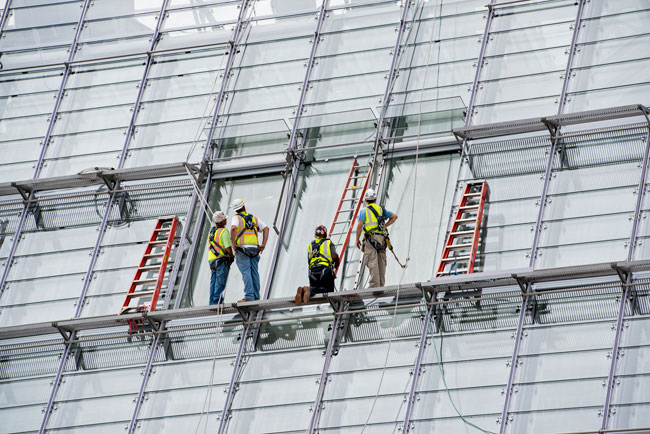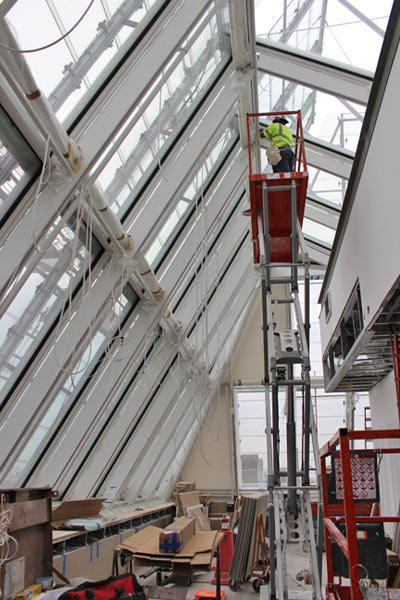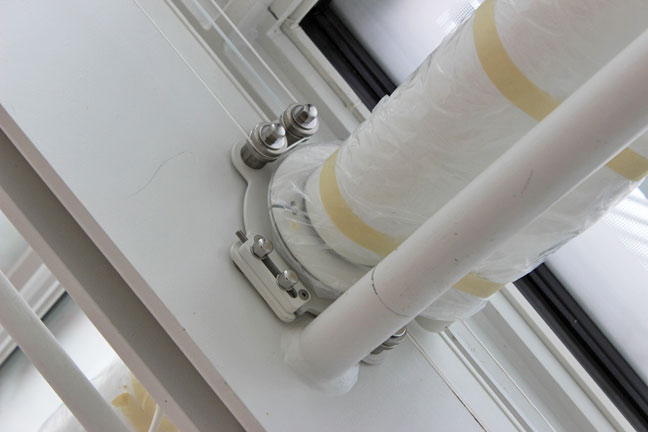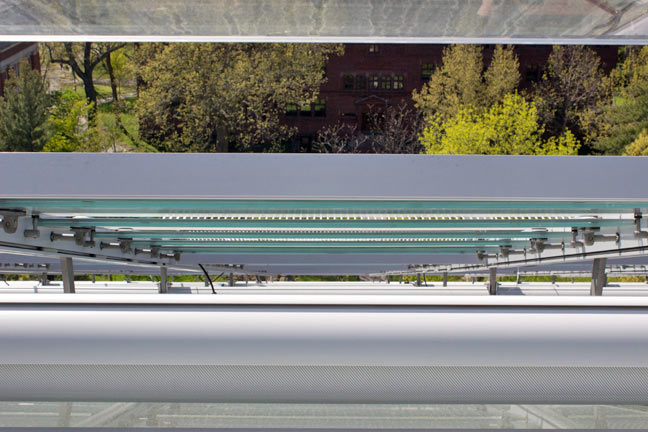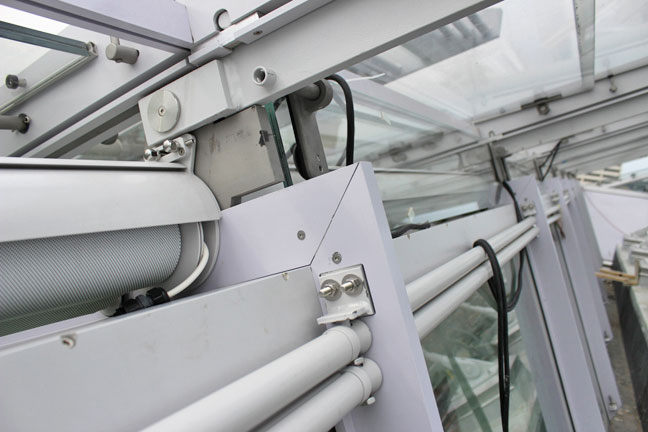In the early stages of our renovation project, architect Renzo Piano promised that he would bring more natural light into the Harvard Art Museums. Piano has certainly delivered on this pledge, as we have seen in the breathtaking transformation of our facility. Controlled natural light, ideal for conservation work and for looking at objects, now filters through our glass rooftop addition and into spaces for the Straus Center for Conservation and Technical Studies, Art Study Center, galleries, and the Calderwood Courtyard below, through what Piano calls the Light Machine. We’ve taken great care to make sure the light is safe, as we use it to help us examine original works of art, many of which are light sensitive.
The multilayered glass roof, for instance, contains filters that keep ultraviolet rays from entering the museums, and workers are installing over 500 individual shades throughout our facility. The glass roof is fitted with exterior and interior shades, except for the area directly over the Calderwood Courtyard, which has only the exterior set. The exterior shades—which are covered to protect them from the elements—hold back the heat of infrared light; the interior shades provide further light control.
As with every element of our renovation project, the shading system has been designed with sensitivity to function and aesthetics. The vertical shades surrounding the courtyard on levels three and four, for example, are set away from the glazing to protect works of art in our arcade galleries from receiving direct sunlight, without obstructing the magnificent view down into the courtyard.
